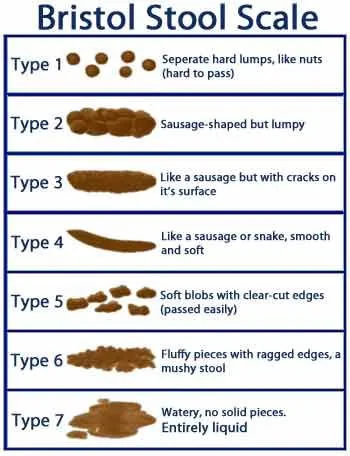Self Test 4 - Stool
This test allows you to understand what causes loose or hard stools as well as the differences.
CONSTIPATION (tight, stagnant)
Type 1: Separate hard lumps, like nuts (hard to pass)
Type 2: Sausage-shaped, but lumpy
NORMAL HEALTHY
Type 3: Sausage/banana-like but with cracks on its surface
Type 4: BEST is Sausage/banana/snake-like, smooth and soft
DIARRHEA (trending loose)
Type 5: Soft blobs with clear cut edges (passed easily)
Type 6: Fluffy pieces with ragged edges, mushy, pudding-like
Type 7: Watery, no solid pieces, or entirely liquid.
The Bristol Stool Form Scale or Bristol Stool Chart is a seven group classification of the form that appears upon defecation of human feces. It was developed by Dr. K. Hering at the University of Bristol and was first published in the Scandinavian Journal of Gastroenterology in 1997.1. The form of the stool depends on the time it spends in the colon. Although not an exact science, the scale is used to help a physician recognize stool patterns for the purpose of diagnosing digestive conditions and as a research tool to evaluate the effectiveness of treatments for various diseases of the bowel, as well as a clinical communication aid.


